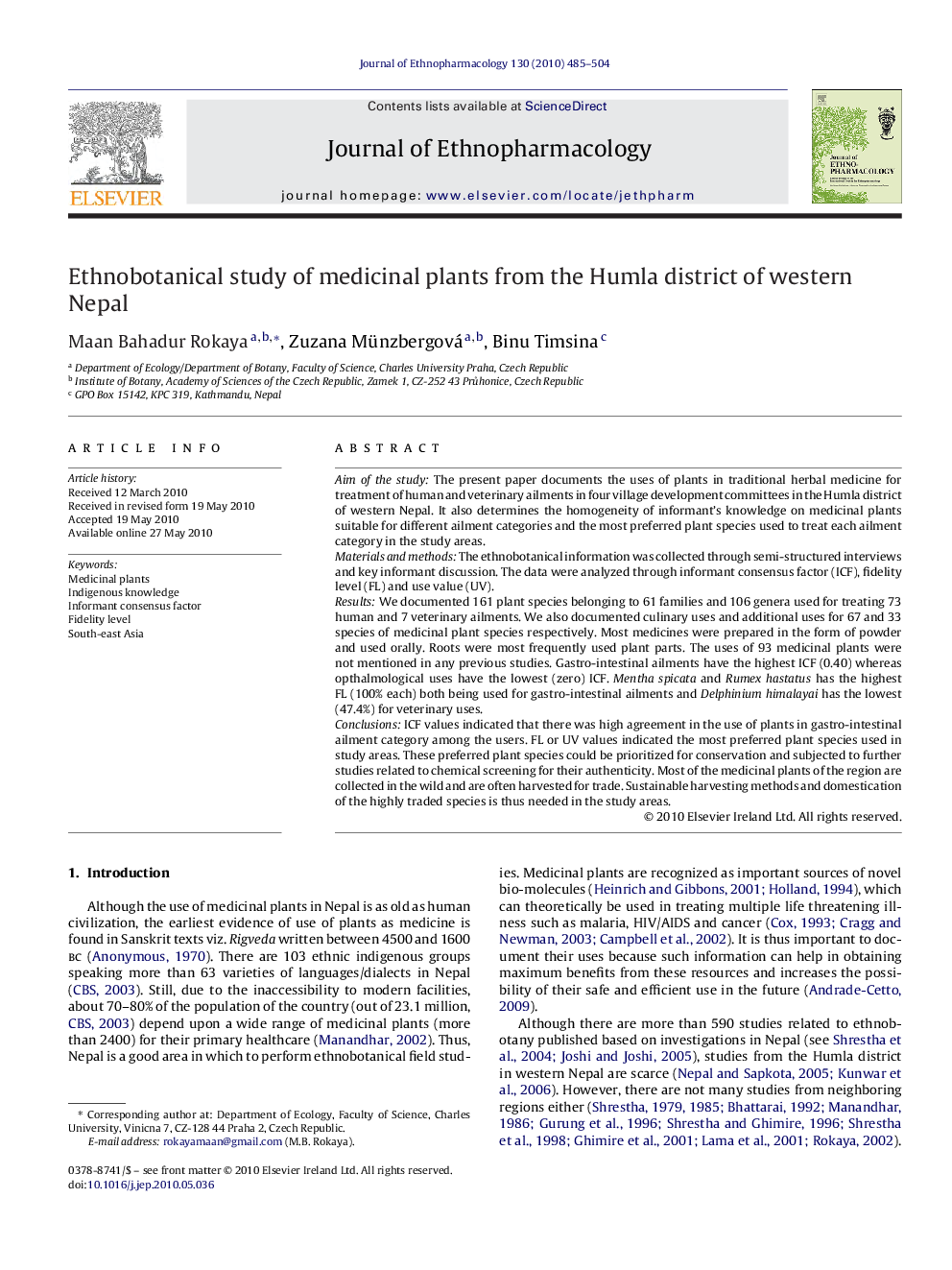| کد مقاله | کد نشریه | سال انتشار | مقاله انگلیسی | نسخه تمام متن |
|---|---|---|---|---|
| 2546100 | 1560408 | 2010 | 20 صفحه PDF | دانلود رایگان |

Aim of the studyThe present paper documents the uses of plants in traditional herbal medicine for treatment of human and veterinary ailments in four village development committees in the Humla district of western Nepal. It also determines the homogeneity of informant's knowledge on medicinal plants suitable for different ailment categories and the most preferred plant species used to treat each ailment category in the study areas.Materials and methodsThe ethnobotanical information was collected through semi-structured interviews and key informant discussion. The data were analyzed through informant consensus factor (ICF), fidelity level (FL) and use value (UV).ResultsWe documented 161 plant species belonging to 61 families and 106 genera used for treating 73 human and 7 veterinary ailments. We also documented culinary uses and additional uses for 67 and 33 species of medicinal plant species respectively. Most medicines were prepared in the form of powder and used orally. Roots were most frequently used plant parts. The uses of 93 medicinal plants were not mentioned in any previous studies. Gastro-intestinal ailments have the highest ICF (0.40) whereas opthalmological uses have the lowest (zero) ICF. Mentha spicata and Rumex hastatus has the highest FL (100% each) both being used for gastro-intestinal ailments and Delphinium himalayai has the lowest (47.4%) for veterinary uses.ConclusionsICF values indicated that there was high agreement in the use of plants in gastro-intestinal ailment category among the users. FL or UV values indicated the most preferred plant species used in study areas. These preferred plant species could be prioritized for conservation and subjected to further studies related to chemical screening for their authenticity. Most of the medicinal plants of the region are collected in the wild and are often harvested for trade. Sustainable harvesting methods and domestication of the highly traded species is thus needed in the study areas.
The research related to ethobotanical uses of medicinal plants for treatment of human and veterinary ailments was carried out in four village development committees in the Humla district of western Nepal. Homogeneity of informant's knowledge and most important plant species used for different ailment categories were determined in the study areas through informant consensus factor (ICF), fidelity level (FL) and use value (UV). Altogether, 161 plant species belonging to 61 families and 106 genera were described. They are used for treating 73 human and 7 veterinary ailments. Medicines were prepared in the form of powder and mostly used orally. The most frequently used plant part was underground part. There was high consensus of use of plants for gastro-intestinal ailments whereas least was for opthalmological uses. Sustainable harvesting methods and domestication of the most preferred and highly traded medicinal plant species are necessary because these speices are strongly threatened by overharvesting.Figure optionsDownload as PowerPoint slide
Journal: Journal of Ethnopharmacology - Volume 130, Issue 3, 9 August 2010, Pages 485–504